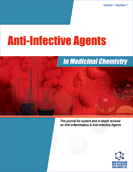Abstract
The increasing number of antibiotic resistant bacterial strains presents an emerging world health problem that demands continued effort to develop new antibacterial compounds. Endogenous antibacterial peptides (ABPs) that are constitutively and/or inducibly produced in tissues exposed to external surroundings represent new candidates for development of such compounds. Most ABPs target bacterial membranes initially by electrostatic interactions between positively charged amino acids and negatively charged molecules present on bacterial walls, followed by compromise of the permeability barrier of bacterial membranes through the formation of pores, leading to rapid cell death and efficient bacterial elimination. Other mechanisms, such as the inhibition of bacterial protein and DNA synthesis or receptor-mediated stimulation of host defense mechanisms are also ascribed to these molecules. The activities of ABPs correlate positively with a gradient of hydrophobicity along the peptide backbone, net positive charge at neutral pH, and secondary structure. More than 850 sequences with antibacterial activity have been described, and this number continues to grow with the addition of newly discovered, as well as synthetic, peptides. Many strategies, including increasing net positive charge, increasing net hydrophobicity, conjugation of peptides with lipophilic acids, incorporation of carbonate bonds, and synthesis of their hybrids and truncated sequences that omit hemolytic regions, have been proposed to increase efficiency of synthetic ABPs. Additionally peptide-mimicking molecules such as cationic steroid antibiotics (CSAs) may be useful alternatives to natural ABPs. Current challenges for practical application of ABPs are the high cost of synthesis/isolation, inactivation by blood plasma, confinement by anionic polyelectrolytes, and possible unknown toxicity.
Keywords: Cationic antibacterial peptides, endotoxin, lipoteichoic acid, NF-κB
 10
10





















